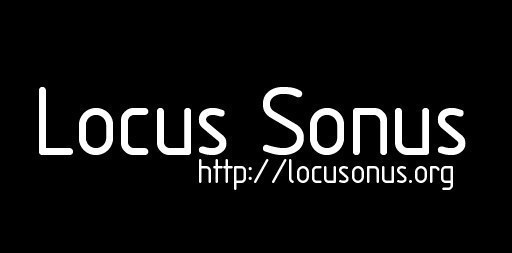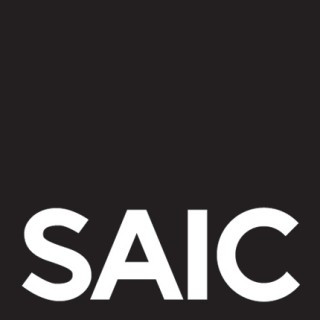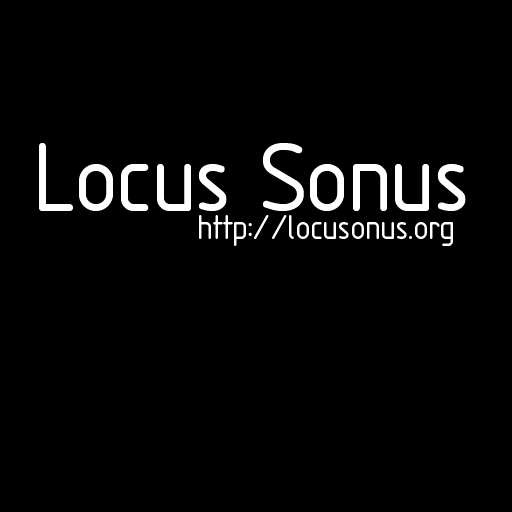|
Menu : R & D
Menu : Valorisation
• 2008-2011 - PUF Partner University Fund
Projects & programmes :
LS in SL - New Atlantis -
Partners
- SAIC School of the Art Institute of Chicago (US)
- LOCUS SONUS, École Supérieure d'Art d'Aix en Provence (F)
Project
TRANSATLAB RESEARCH: Space and Objects
The Transatlab project is at the cutting edge of new technologies and their application to artistic creation. An important part of the two schools' activities involve the creation of new platforms for artistic creation and their integration into the pedagogical process.
One of the central aspects of Transatlab will involve the further development of new pedagogical and artistic tools, based on ideas and techniques explored in the original three year face project by the Chicago/Aix team. Some of the domains of this work included live networked sound streams and algorithmic sound generation, 3d virtual reality immersive environments (cave) with creative tools for virtual world creation, networked electronics and robotics, as well as innovative interfaces using live video analysis for gesture recognition.
In the second phase of its development, Translatlab proposes a new approach from the participating departments centering around more specific research-based collaboration that will extend these activities. It aslo intends to create a pedagogical platform taking place both on-site as well as online, using network tools to co-ordinate the two sites and encourage further exchange of expertise.
Instead of merely exchanging students within the framework of an inter-school exchange program, a very small group (4-6) of top-level graduate students will be invited to participate in trans-disciplinary trans-atlantic research projects initiated by the departments within the two schools. The goal is to allow graduate and recently graduated “fellows,“ whose work already or potentially engages the research aims of the schools, the time and resources to develop this work into a platform for artistic creation.
What makes sound study at art schools different than music at conservatories is that here composers and sound artists use sound as material, much like a sculptor or painter. That is, the physical and acoustic properties of sound are pre-eminent; sound is not simply the medium through which music passes, but a structural, perceptual, environmental, social and psychic phenomenon. Our use of sound research and performance via the Internet has taken us into the realm of an audio/neural network—an area ripe for more experimentation. Another look at the Transatlab site (attached Pdf) shows our current involvement with issues of audio streaming, live and virtual performance, sonic environments, aural and visual memory.
Distance learning is becoming increasingly widespread. In our research, we see telecommunications: audio and video streaming, web broadcasting, video conferencing, Internet art, and other developments that have gained permanence. To the art world the ramifications are abundant, particularly in a reevaluation of what it is to be an artist and how one defines authorship in art and research. In the creative arts as in life, young artists tend to be the barometer of change and trends. Institutions scurry to define “interdisciplinary” well after their students are already practicing it. We feel that graduate students, resident fellows and faculty have much to gain from the exchange program. Our faculties and students are enlivened by globalization through the immediacy of the Internet. We have already begun transatlantic interactions. It is therefore reasonable to presume, considering the natural convergence, past history, and excellence of both the SAIC and the ESAA, that this new collaboration will be long-lived and highly beneficial to Franco-American relations.
Description of the Partnership
Audiences have eyes as well as ears. — John Cage
The School of the Art Institute of Chicago (SAIC) is proud to have provided a world-class art and design education since its founding in 1866. Cultivating creativity and innovation in its curriculum, SAIC's faculty and students have extended the School's influence on contemporary art and design throughout the United States and around the world.
We are pleased to again submit an application to PUF after having had the good fortune of receiving a FACE grant during its maiden year. As this marks our final year, we believe that we are in a position to hone our research and make even greater strides in the ensuing years. While our first three years of research delved into several areas of investigation: sound, Virtual Reality (VR), telecommunications and streaming, mecatronics and light, we submit that a logical transition would be to focus on the areas that proved most fitting and fruitful to the strengths of each institution.
We observed quickly that sound was an indispensable element in all of the work, and that there is a significant advantage in placing it in the forefront as we study the sound-space continuum in the realm of the physical and virtual space. Such interaction will advance the research that has already begun between the Sound Program and the Art and Technology Program at the SAIC, and Locus Sonus, a collaborative facilitated by Peter Sinclair (ESAA) and Jérôme Joy (Villa Arson, Nice). Furthermore, Locus Sonus has expanded in collaboration with institutions across France, and given the SAIC’s deep history of sound experiment—perhaps the longest standing Art & Technology and Sound Programs of any art schools in the US—one could understand how easily we acclimated to common research. So far, we have found common interest in sound research using languages such as Mac/MSP, Pure Data (open source), Python, Processing, STREAPS, etc., as well as homemade and commercial interface hardware such as the Arduino Board and ArtBus (see attached file, transatlab.pdf or http://www.transatlab.net/).
In addition, we will continue to explore the relationship between the physical and virtual domain, visual as well as acoustic through our VR labs. Since 2001, SAIC has maintained an active teaching and research lab featuring a C-Wall VR system, a projection-based interactive stereoscopic display based on the well-known CAVE technology.
In order to develop collaborative virtual environments, a VR lab had to be developed in Aix. In 2007, Ricardo Garcia (ESAA), Ben Chang (SAIC), and Robb Drinkwater (SAIC) successfully built a C-Wall system at ESAA, using computers from the Atelier 3D and a new stereoscopic rear-projection screen. The January 2007 workshop saw the completion of this system, experimental pieces in VR by students, and plans for the development of a multi-user interactive environment based on soundscapes and virtual audio.
Hence, the time was right for the development of other solutions for immersive environments, with specific goals in mind. These included cross-platform compatibility; compatibility with both the 3DSMax and Maya modeling packages for Windows and Linux; the use of free and open-source software; low technical learning curve; low-cost motion tracking; and compatibility with Pure Data and other digital sound programming languages. In 2007, faculty at ESAA and SAIC pursued research on developing this system, including evaluations of open-source graphics programming environments including OGRE, Panda, and Open Scene Graph; the use of the Nintendo WiiMote controller as a low-cost alternative to the Ascension Flock of Birds motion tracker; and evaluation of new developments in head-mount display technology. The two schools acquired matching sets of equipment, including the eMagin Z800 head-mount, a pair of 3D "goggles" that gives the wearer a complete sense of immersion in virtual space. At SAIC, the z800 was integrated into the existing CAVE/C-Wall lab, used in student projects, and installed as part of a month-long public exhibition of student VR work in Chicago. Other student projects laid out the framework for integrating the OGRE game engine, the WiiMote motion tracker, and Pure Data using the Python programming language in Linux. At ESAA, faculty and students developed the framework for integrating these same components - the head-mount display, the WiiMote, and the Python programming language - with the Panda3D graphics engine on Windows.
These efforts provided the groundwork for the January 2008 workshop in Aix, which will focus on the production
of a two-player virtual environment for the exploration of virtual soundscapes over a three-week period. This
workshop will serve two experimental purposes in addition to the primary artwork production: evaluation of the
new VR system in an educational environment, and the development of working processes with the group of
students from SAIC and ESAA which can be carried forward into collaborations and linked courses over the next
two years.
We will continue to work in sound and VR, not as separate entities, but as complementary systems to explore
the psychology and sociology of new environments both real and virtual. A preliminary workshop investigating
how to integrate sounds and objects in the physical world with virtualized settings in Second Life, took place at
the SAIC with faculty from both institutions. In-house hardware interfaces for real-world object control and
interactivity have been recently developed by Ed Bennett (SAIC) – the ArtBus, and Jean-Pierre Mandon (ESAA)
– the PIC. These devices are expected to play an increasingly major role in the relationship of the virtual world
and physical objects in the areas of mecatronics, yet another interest shared among our students and faculty
(see TransAtLab).
As a major aspect of our continued relationship, advanced graduate students or resident “fellows” (post Masters
level) and faculty would step up communication via teleconferencing. Our communal group projects rely on
various “tele techniques,” i.e. interfaces capable of sending and receiving multiple audio streams from multiple
locations) CAVE (VR teleconferencing and physical motion transfer via internet). The ESAA and the SAIC
successfully participated in long distance virtual lectures and conferences. Over a proposed three-year period,
we propose that the ESAA and SAIC conduct much of the research virtually over improved and dedicated
Internet trunk lines. New research and teaching strategies are inevitable. After three years, we would expect to
see a different and invigorated academic syllabus and research methodology in the arts.
|





